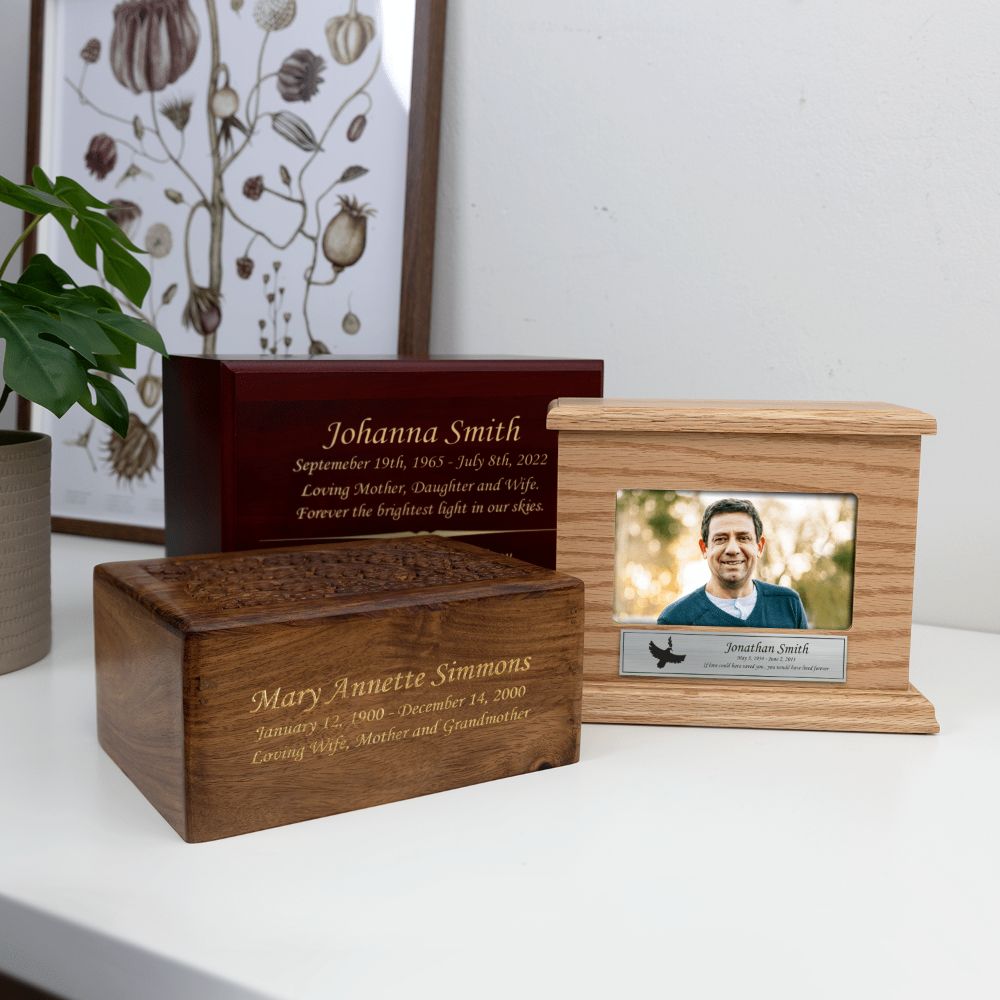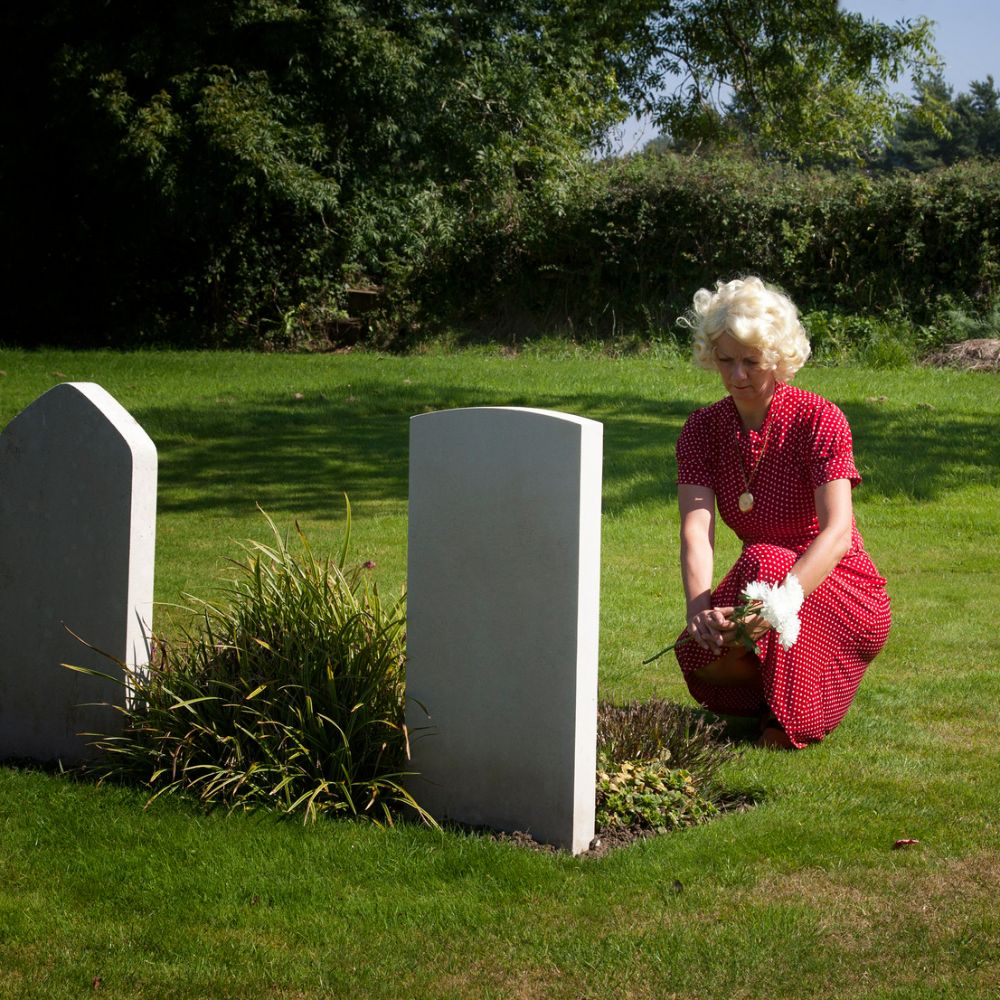All Articles & Guides / Cremation / How Does Cremation Work?
How Does Cremation Work?
The Cremation Process
Upon death, the first thing that happens is an examination by a doctor who determines the cause and signs a death certificate. This often occurs in a hospital and the body is kept in a large cooler to prevent quick decomposition. The deceased is then transferred to a funeral home or crematory and will be prepared for either a service or a direct cremation.

Understanding How Cremation Works
First, the crematorium needs to know if the body is being prepared for a service. If being prepared for a service, the body is embalmed, dressed, and presented at the final service. The cremation can occur after the service, where the body will be placed dressed into a plain wooden or cardboard casket.
If there is no service, the body can be cremated after the mandatory waiting period. All jewelry, watches, prosthetics, and items such as pacemakers are removed. The body is either cremated in the last clothing worn by the deceased, or in a wrapped sheet. The body is placed in the casket and into the retort, which then burns at temperatures between 1400 and 1800 degrees Fahrenheit for anywhere from 90 minutes to 4 hours.
Finally, the remains are cooled. There can be anywhere between 3 to 9 pounds of remains after incineration. Once these are cooled, any remaining metals such as screws or plates are removed. Then, the remains are processed through a cremulator, or grinder, to ensure there are no larger bits of bone remaining. What you receive afterward isn’t actually ashes, but ground-up remains of bones.
After the grinding process, cremains, also called ashes, are placed in a plastic bag and then either into a temporary container, or urn. Selecting the right urn can be difficult, and it’s important to choose the correct size as well as one that can be a beautiful memorial. We often recommend that the plastic bag holding the ashes is placed into a special urn bag. That way, if there’s an accident and an urn breaks, the remains are protected.
How long does it take to get ashes after cremation?
After cremation, there are a few steps that need to be taken before remains are given to the loved ones of the deceased. As mentioned above, after the cooling, collection, and grinding process, you may be able to collect ashes the same day, or within a couple of days.
Now that you know how cremation works, you may have some questions about how to prepare your loved one for the cremation process. Here are some of the most commonly asked questions regarding cremations.
Do you wear clothes when you are cremated?
This often depends on whether the deceased’s body is presented at a service beforehand or whether there is a direct cremation. For a service, a body is often dressed up, while for a direct cremation a body may be left in the last clothes worn by the deceased or wrapped in a sheet before being placed into a crematory casket. However, you may also be able to choose the deceased’s outfit for cremation and discuss this with your chosen crematory.
How soon are you cremated after death?
Each state has separate laws varying from 24 to 48-hour mandatory waiting periods. Crematoriums may only proceed once a death certificate is received, and there can be delays during doctor issuance since often doctors are given up to 3 days to sign and return a death certificate.
Is a body embalmed before cremation?
No, a body does not need to be embalmed. The only reason a body would be embalmed beforehand is if there was a service before cremation. Then the body would need to be embalmed to prevent decomposition and for the health and safety of those attending the service.
Do teeth survive cremation?
Teeth do not survive the cremation process, and any remaining large bones such as hips or shins end up being ground in a cremulator. Even gold teeth and some metals end up melting down during the process.
How hot does a crematorium burn?
Crematoriums burn at temperatures ranging between 1400 and 1800 degrees Fahrenheit to effectively and efficiently be able to incinerate a body.
Can you view a cremation?
Providing that the funeral home has a viewing room, loved ones can watch the cremation process. Once the body is prepared, it is placed in the retort, and sometimes family can press the button to send away the body into the chamber. The cremation can take anywhere from one to five hours and loved ones may be able to stay throughout the entirety to mourn.
Can items be added to the cremation chamber?
Often your crematorium operator or funeral director will allow you to place certain items into the chamber with the deceased. As long as these items aren’t harmful to the cremation or dangerous, you should be able to add photos, flowers, or meaningful items.
How much of the remains or ashes will I receive?
You will receive the entirety of your loved one's cremains. This can vary depending upon the size of the deceased, but cremains can weigh between three and nine pounds. People are often surprised by the amount of ashes they receive. It’s important to choose an urn that is large enough, but there is no harm in choosing an urn that is larger than needed.
What Do Cremation Ashes Look Like?
Ashes is a slightly misleading word to describe cremated remains since most people associate them with the fine ashes left behind after wood is burnt. Although the untrained eye might not be able to determine what ashes look like from a human vs an object, there are a few key differences. Cremation ashes range in color from white to dark gray and most people are surprised by the weight of cremains – remember that any large fragments of bone are ground down to smaller particles. Regarding what human cremated ashes look like, the texture is gritty and coarse, more comparable to sand than the flaky ashes of paper or wood. Cremated remains will come in a plastic bag and temporary urn box so they can easily be transferred to a more permanent urn.
Do I need to bring the deceased to the crematory?
No, there are transfer services that will move the body from the hospital or place of death and transport it to the chosen funeral home or crematorium. It’s best to speak to either the hospital or the location you’ve chosen for the deceased to be cremated.
Can I have a service and then have a cremation?
Yes, your loved one can be carefully embalmed and presented in an open casket for a service before cremation. The body will be preserved to give you time to organize a service.
Related Content





